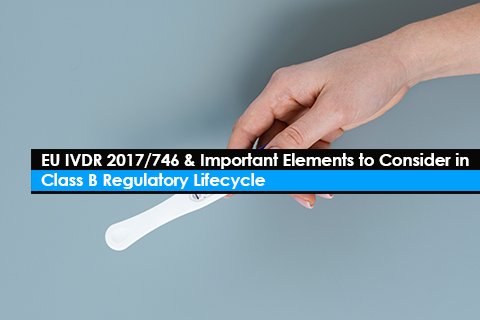As you may know, CE marking is required to place any In Vitro Diagnostics devices (IVDs) in the European Union (EU). CE marking indicates that the given product complies with the European Union In Vitro Diagnostics Device Regulations (EU IVDR) 2017/746. We are all aware that the process is more complex than it seems.
This article provides a few crucial pointers that should be noticed to avoid significant mishaps.
1. Careful Assessment and Applicable Rules for Classifying the Device
The transition from the directives (IVDD) to IVDR has resulted in alterations in the rules and product scope. As a result, a few instances of up-classification have been observed. Based on the fact that the classification of the devices determines the entire Regulatory pathway of the device, it is of utmost importance that the classification is done correctly. One way to avoid any misinterpretations is to go carefully through the MDCG guidance document and take support from the Regulatory experts.
2. Keeping Track of the Specific Requirements
The requirements for Class B will vary significantly from that of other IVD Classes. For instance, the assessment of technical documentation does not apply to Class A devices but is required for Class B devices. Similarly, a few requirements do not apply to Class B devices; for instance, Classes C & D must draw a summary of safety and performance (SSCP).
3. Don’t Mix Class B Devices and Class B Self-testing/NPT Devices
The Class B devices are further divided into general Class B IVDs, self-testing devices, and Near-Patient Testing (NPT) devices. Herein, the Regulatory pathway and the requirements for CE-marking vary a lot. For instance, in self-testing and NPT Class B IVDs the technical documentation assessment should be conducted every five (05) years. However, in the case of other Class B IVDs, the technical documentation audit is carried out every year.
4. Following the Annexes
Under EU IVDR, the Class B IVDs are required to meet the general safety and performance requirements set out in Annex I which apply to the Class B IVDs, considering its intended purpose. Further, Annex IX, Chapters I and III (including an assessment of the technical documentation of at least one representative device per category of devices) are also supposed to be followed by Class B IVDs.
5. Need to Take Swift Action
With the full implementation of new regulations, the manufacturers are expected to be CE-certified under EU IVDR compliance. However, the limited Notified Body capacity burdens the certification and re-certification bandwidth. Even though, two (02) Notified Bodies have been added to the NANDO database recently, manufacturers should take action promptly. Please reach out to a Regulatory expert in case of any concerns during the conformity assessment. Otherwise, it might lead to a delay in the certification process.
6. Don’t Forget to Appoint a PRRC
Under the new rules, manufacturers must appoint at least one Person Responsible for Regulatory Compliance (PRRC). The role of the PRRC is to ensure that the manufacturers comply with the new regulations. The PRRC should have appropriate knowledge and expertise in the IVD domain. The person appointed should generally be the employee of the organization, but in the case of small and micro manufacturers, they can outsource and must ensure the PRRC is permanent and at continuous disposal.
7. Do not Forget to Indicate the Specificities while Registering in EUDAMED
EUDAMED is now being developed to ensure transparency and easy exchange of information between the European Commission and competent authorities. All the economic operators must register, and manufacturers must list their devices in EUDAMED. One thing to note here is while registering the devices in the EUDAMED, don’t forget to indicate to the Member States whether the device is available or is to be made available.
8. Establishing Post-market Surveillance (PMS) System
With EU IVDR emphasizing PMS management, the Class B IVD manufacturers must draw a PMS plan, post-market performance follow-up, and PMS report. While the Periodic Safety Update Report (PSUR) is not required to be prepared by the Class B manufacturers, the PMS report must be maintained and updated whenever necessary and produced to notified body/competent authority upon request.
With the given complexities and stringent Regulatory framework in the EU market, a series of challenges are expected to be faced by IVD manufacturers. One way to overcome and ensure efficiency in the Regulatory lifecycle of the product is to do thorough due diligence, analyze the gap and implement corrective measures.
If required, taking external support from regulatory consultants can also pose a good practice for optimization.
Do you require support in launching your class B IVDs in the EU Market? Consult Freyr today!





